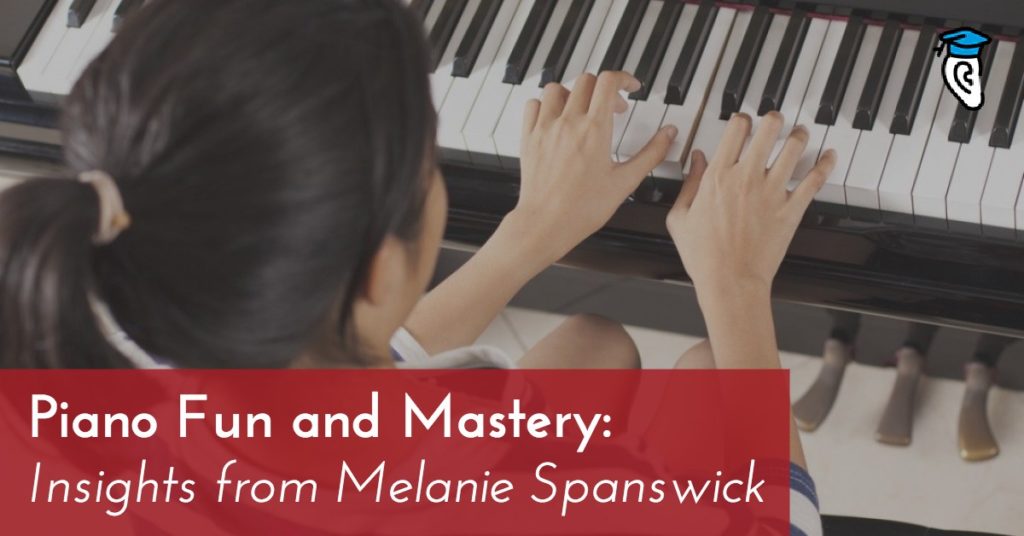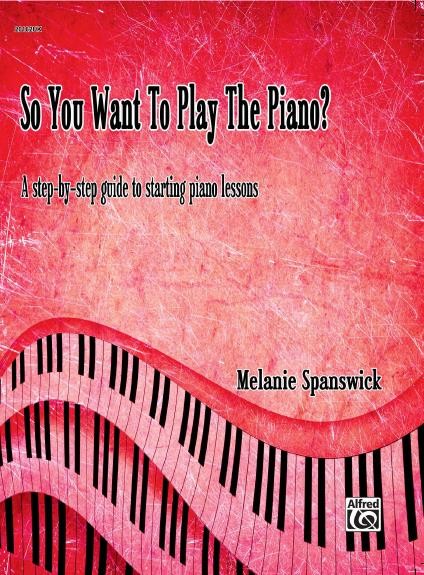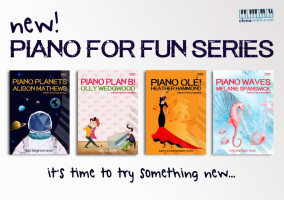Melanie Spanswick is one of the leading voices in piano education, running the popular Classical Piano and Music Education Blog and writing for a variety of respected music publications including Music Teacher Magazine, International Piano Magazine and The Daily Telegraph. She has also curated and presented an interview series entitled Classical Conversations, speaking on camera to some of the world’s greatest pianists.
We invited Melanie to share her perspective on what beginners should consider when starting piano, and how they can use improvisation and slow practice to develop their musical ear.
Welcome Melanie, and thanks for joining us at EasyEarTraining.com!
First of all congratulations on the publication of an expanded second edition of your book “So You Want to Play the Piano?”.
Q: Many self-taught beginners think they can just choose some pieces to play, find scales to practice and get started. Could you explain what a beginner will find in this book that they would otherwise be missing out on?
So You Want To Play The Piano? is a complete guide for anyone who is just starting to play or thinking about learning to play, and it may also be useful for piano teachers at the outset of their career. So You Want To Play The Piano? provides information on the best instruments to buy (or rent), which piano methods (piano tutor books for beginners) are beneficial (I survey over 20 methods), and most importantly, how to locate the best teachers, as well as what to look for in a teacher. A good piano teacher is paramount in order to make real progress.
There is a chapter on what to expect from the first few lessons, and how to get the most from lessons. I have written about piano technique, how to practice and learn pieces, and there is an extensive chapter on piano exams; this section examines various exam boards worldwide, and also proffers ideas on how to practice each exam element (including set pieces, scales, sight-reading and aural tests). A brief history of piano music, and lists of music and educational composers (for those up to and including intermediate level) are addressed in chapter 11, and the last chapter deals with festivals, competitions, and how to enjoy public performing. All twelve chapters are littered with musical examples and photographs.
After reading this guide, students will have acquired substantial knowledge and will be aware of the best ways to begin in order to make significant improvement. It’s a manual to keep as a reference by the piano!
That sounds like a useful reference book indeed!
Q: There is some debate these days about the future of instrument learning and the pros and cons of self-learning, taking live video lessons online, and learning in-person with a teacher. How does the book relate to these different options?
So You Want To Play The Piano? examines each option. Self-learning usually ends with students quitting, and only a certain amount can be gleaned from video lessons online. Some online apps can no doubt be helpful and fun, but the piano is an instrument requiring an in-person teacher. Mastering the piano is multi-tasking at its most demanding, and a teacher can help pupils every step of the way; demonstrating the best ways to practice, tackle pieces, scales etc.
”Mastering the piano is multi-tasking at its most demanding, and a teacher can help pupils every step of the way.”
There are so many elements which need personal advice, help, and continual correction as well as encouragement. In my opinion, a teacher plays a crucial part in successful piano playing.
The Piano for Fun series is actually a set of my compositions! So it isn’t a method or text book for practising. Piano Waves is part of a collection of four books (written by four different composers) called Piano for Fun which are published by EVC Music Publications.
My book contains 5 pieces which are intended for pupils of intermediate level (Grades 4-6). I love writing educational piano pieces, and this my third book of original compositions The pieces are all inspired by the sea and my fond memories of the ocean in all its guises, when I gave piano recitals on ships.
Whilst playing for “fun” is always the ideal sentiment, to learn to play fluently, a great deal of work is necessary. However, once a level of proficiency has been procured, playing is fun and very enjoyable for the budding pianist.
Definitely. This is important and can really benefit students in so many ways. As can music theory. Both elements help pupils to understand harmony, rhythm, keys and musical patterns, which can assist in learning and assimilating quickly.
Improvisation allows pianists to expand creatively too, which can lead to compositional development and a firmer understanding of musical analysis.
Slow practice is the best way to facilitate complete mastery. This is probably true of most instruments.
”Slow practice is the best way to facilitate complete mastery.”
After assuming all the correct notes and fingerings, I ask students to listen very carefully to the sound they produce; depth of sound is vital in piano playing. Rhythm can be dealt with during slow practice too: is every note equal in length as well as tone? This is particularly important in rapid passage work. When working slowly, sub-dividing beats, as well as working with a metronome in order to acquire an internal pulse, can all be helpful. Sorting out structure, phrasing and articulation is all also easier at slower speeds. After which, the process of playing up to speed can seem relatively simple.
This might depend on the instrument they have on which to practice! Ideal methods to expand and explore dynamics and sound variation involve listening to a wide variety of music, different instruments and external musical influences. This will inspire a student to explore a larger tonal palette.
Developing a full tone also helps; using the body so it is tension free, moving flexibly around the keyboard, and thus enabling a full sound (by means of arm-weight), will all contribute to initiating more colour, depth and timbre.
The new edition of Melanie’s book “So You Want to Play the Piano?” can be purchased from Alfred Music or Amazon and her “Piano for Fun” compositions are available from EVC Music Publications. You can follow Melanie’s latest news, educational writings, regular contests and giveaways, and the Classical Conversations series at melaniespanswick.com









